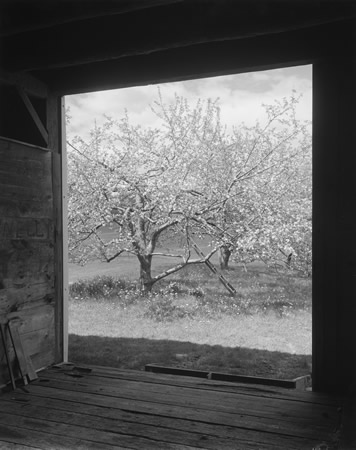On Rexer on Szarkowski
In the September/October issue of Art On Paper, Lyle Rexer begins his column that focuses on the late John Szarkowski with, “Why is it that photographers are writers at heart, that they need to supplement their image making with words?” While I agree that many of the formidable photographers throughout this medium's relatively short history have also written about the medium, I will disagree that it is because there is some inherent "incompleteness" on the part of the photograph itself. It possible that they felt compelled to write about this new medium because it was exactly that, new. There is undoubtedly more written about painting than there is photography, but is that any indication of painting's incompleteness? In actuality, all mediums are incomplete. But, in their unique ways, these mediums when used in art, all point to that one inexplicable quality in life—be it beauty or truth or god.
The further the column (re)progresses, it makes me think Rexer had some kind of bone to pick with the former MoMA curator. He accuses Szarkowski of, “Using language (and the MoMA pulpit) to justify photography as ‘art.’” and his “tricky evasions and slights of hand, reverting to anecdote, biography, description, [etc.] . . . but rarely confronting the paradox of photography's artlessness.” Firstly, I am not sure what the argument actually is here; why would a curator of photography at an art museum not lobby for that medium's acceptance as an equally valid means of expression? Secondly, specifically to Rexer's reference to The Work of Atget, Szarkowski is using valid critical methods for examining the artist and their work, drawing his own conclusions about what he has found. I agree that even though not all photography can—or should—be considered art, reevaluating photographs in a critical way can reveal a photographer's deep connection to the world, and how that connection influenced their creations, regardless of their original intentions.

Rexer then evaluates Szarkowski as a photographer, and claims he, “trains his lens on that which can not really be shown but that can only be captured in words.” He also says of Szarkowski's last photographs of apple trees that, “They are delicate, but incomplete meditations on mortality that beg for a writers voice.” and says they, “could have been illustrations for Frost's ‘After Apple Picking.’” These two statements exemplify what I believe is Rexer's possible misunderstanding—and certainly his differing view—of how artists touch or point to the sublime in life—something I believe is the actual purpose of art, and why it can not be “captured in words,” (or pictures), but only alluded to. In the capturing and dissecting, which I think happens when art is looked at through purely intellectual eyes, one inevitably kills the life the art is trying to touch.
As a photographer, I am more inclined to first read or place more value on the writings of an artist—whatever the medium—ahead of the writings of someone who is purely a theoretician. Based on the work, I can more-easily know the artist's capacity to feel, and know how what the feel will affect how they think. Rather than blindly trusting the theorist, who may simply know how to think.